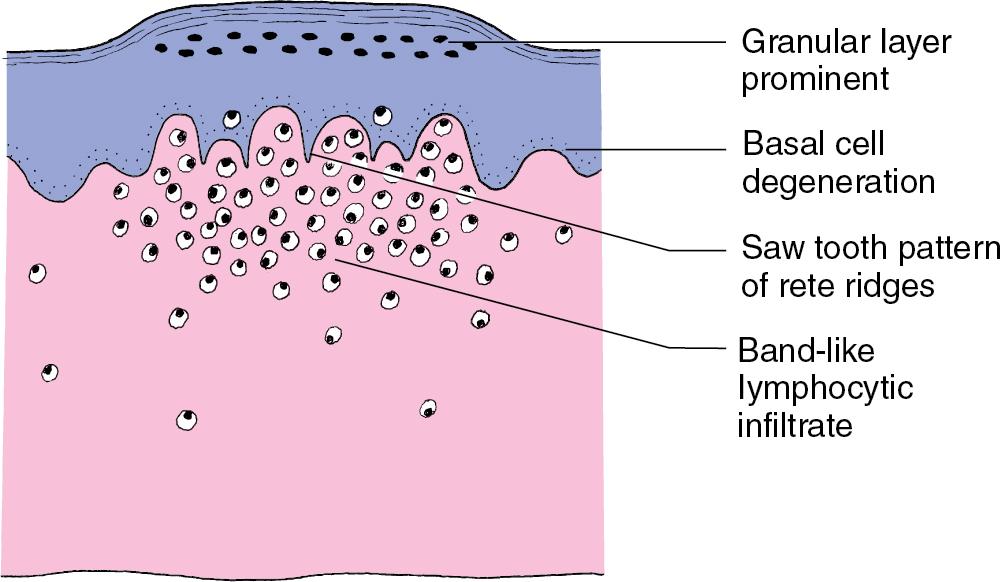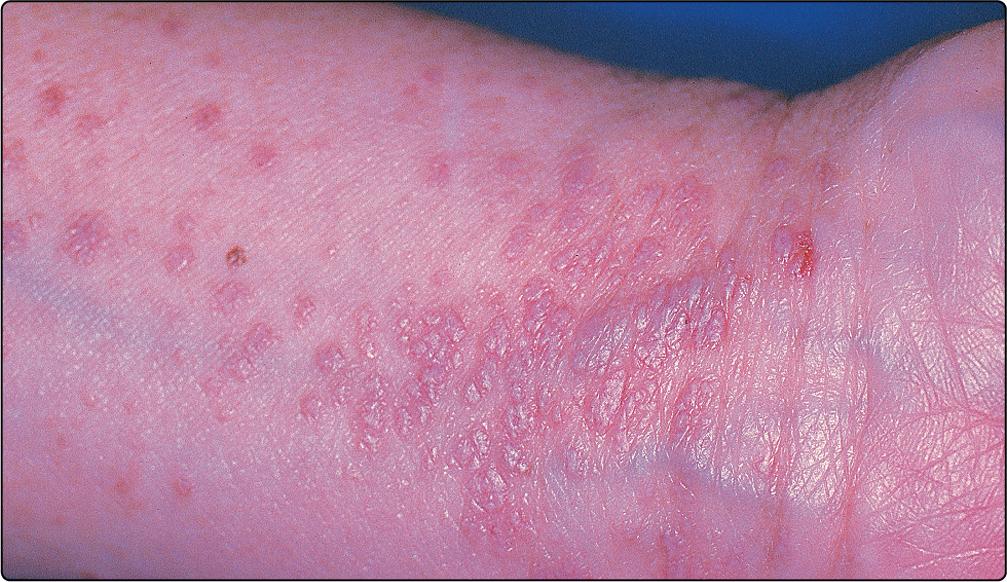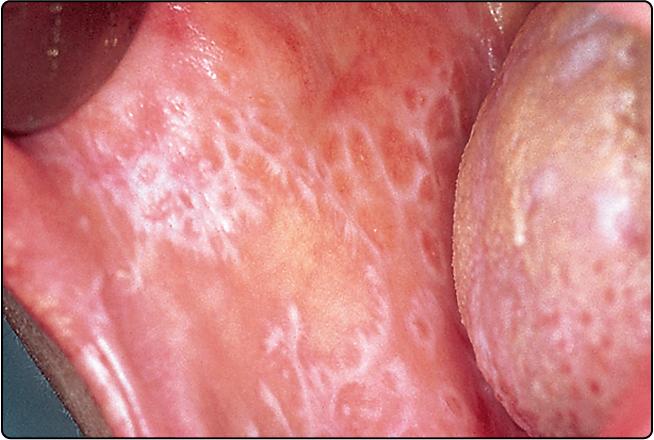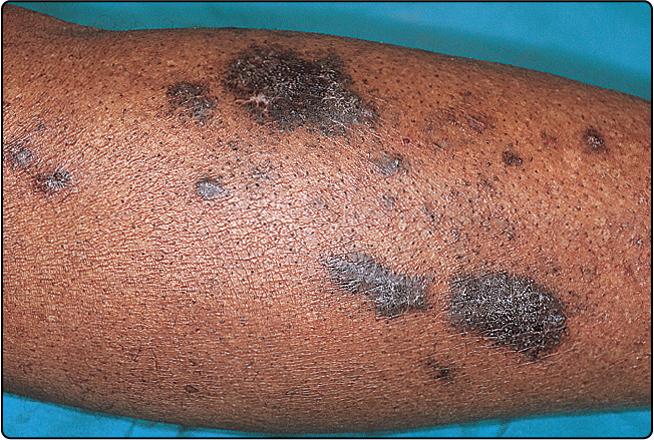Physical Address
304 North Cardinal St.
Dorchester Center, MA 02124
Lichen planus and other disorders with a lichenoid appearance of shiny flat-topped papules are presented here.
Lichen planus is a relatively common pruritic papular dermatosis involving the flexor surfaces, mucous membrane and genitalia.
The cause is unknown, but an immune pathogenesis for lichen planus is suspected as T cells infiltrate the skin, immunoglobulin M is found at the dermoepidermal junction, a lichenoid eruption is part of graft-versus-host disease (p. 89) and there is an association with some autoimmune diseases.
In lichen planus, the granular layer is thickened, basal cells show liquefaction degeneration and lymphocytes infiltrate the upper dermis in a band-like fashion ( Fig. 23.1 ).

Two-thirds of cases occur in the 30- to 60-year-old age group. It is uncommon at the extremes of age, and the sex incidence is equal. Lichen planus tends to start on the limbs. It may spread rapidly to become generalized within 4 weeks, but the commoner localized forms progress more slowly. Typical lesions are very itchy, flat-topped polygonal papules, a few millimetres in diameter, which may show a surface network of delicate white lines (Wickham’s striae). Initially, the papules are red, but they become violaceous ( Fig. 23.2 ).

The eruption is symmetrical and affects:
the forearms and wrists
the lower legs and thighs
the genitalia, mucous membranes
the palms and soles.
Mucous membrane involvement, especially of the buccal mucosa, occurs in up to two-thirds of cases, and may be present without skin lesions ( Fig. 23.3 ). Lichen planus also shows the Koebner phenomenon (p. 21) which may explain some linear lesions. Follicular and other variants are found (see below). In most cases, papules flatten after a few months to leave pigmentation, but some become hypertrophic. Half of all patients are clear within 9 months, but 15% have continuing symptoms even after 18 months. Up to 20% have a further attack. Lichen planus may be confused with other conditions, as shown in Table 23.1 .

| Type of lichen planus | Differential diagnosis |
|---|---|
| Generalized | Lichenoid drug eruption |
| Guttate psoriasis | |
| Atypical pityriasis rosea | |
| Genital | Psoriasis, scabies |
| Lichen sclerosus | |
| Hypertrophic | Lichen simplex |
A number of variants of lichen planus exist:
Annular . Found in 10% of cases, commonly on the glans penis.
Atrophic . Rare, may be seen with hypertrophic lesions.
Bullous . Blisters appear infrequently in lichen planus.
Follicular . May occur with typical lichen planus; can affect the scalp alone (scarring alopecia; p. 84).
Hypertrophic . Verrucous plaques affect the lower legs or arms ( Fig. 23.4 ); may persist for years.

Mucous membrane . Any mucosal surface may be affected, with or without lesions elsewhere. In the mouth, may represent contact allergy to mercury in amalgam fillings (see Fig. 23.3 ).
Lichen planus may be complicated by the following:
Nail involvement . Found in 10% of patients. Longitudinal grooving and pitting are reversible, but dystrophic/atrophic lesions can produce scarring or permanent nail loss. Lichen planus affecting the nail can be severe and cause extensive nail damage.
Scalp lesions . May be follicular, but pseudopelade-like permanent scarring alopecia is more common (p. 84).
Malignant change . Very infrequent.
Become a Clinical Tree membership for Full access and enjoy Unlimited articles
If you are a member. Log in here